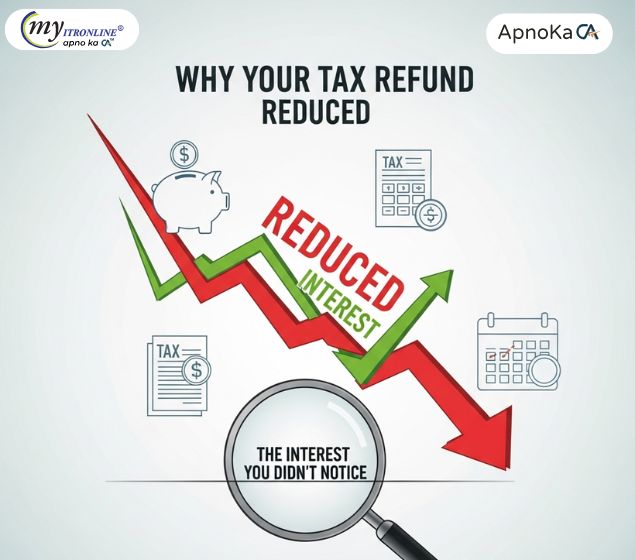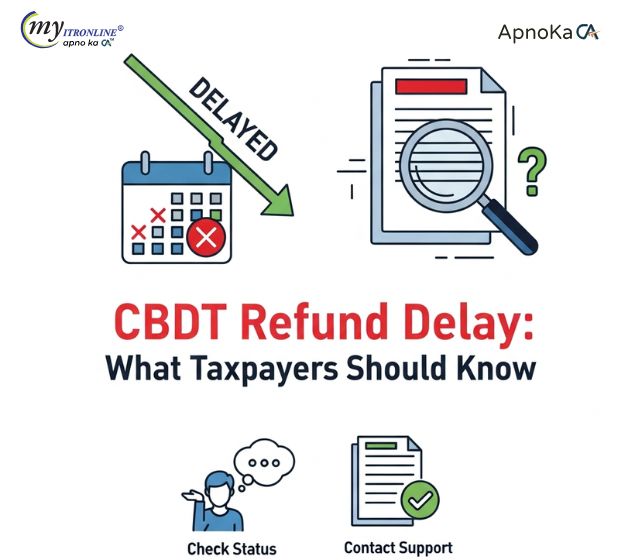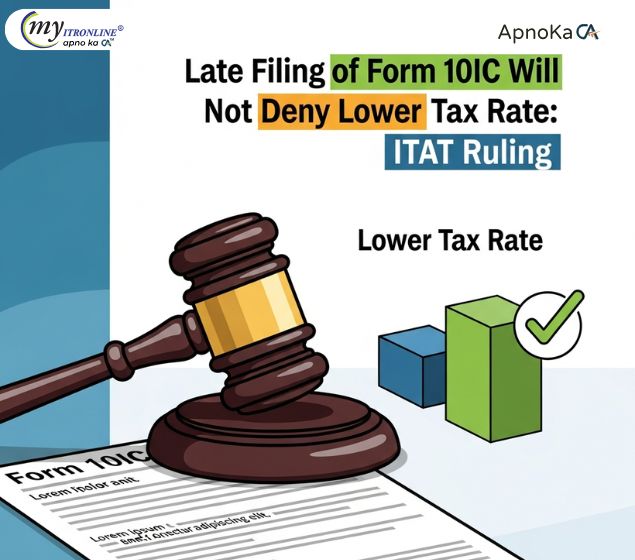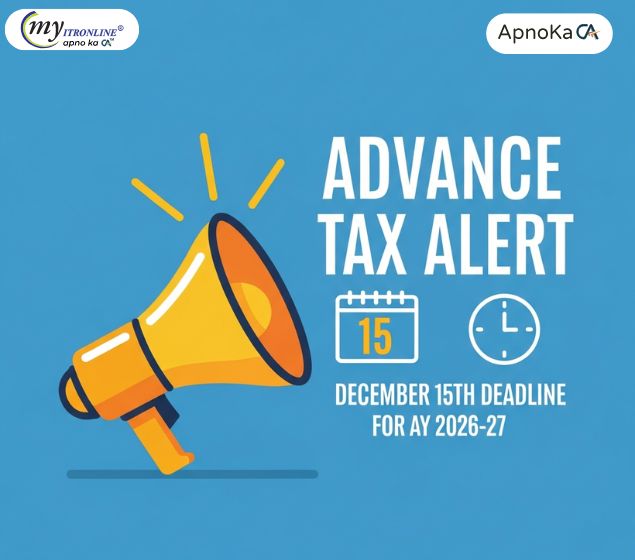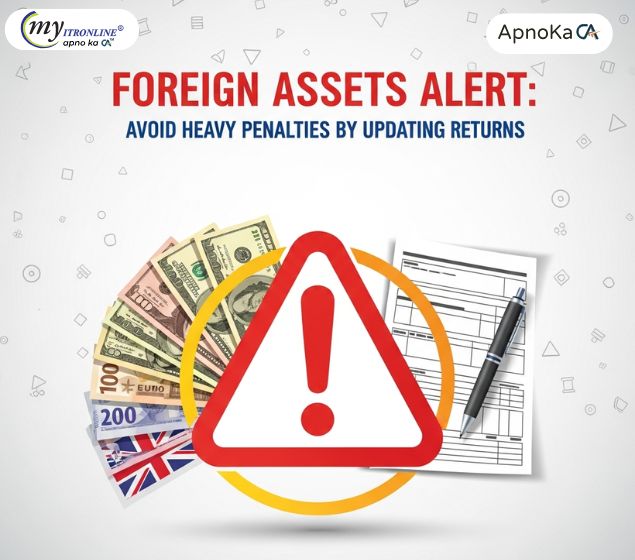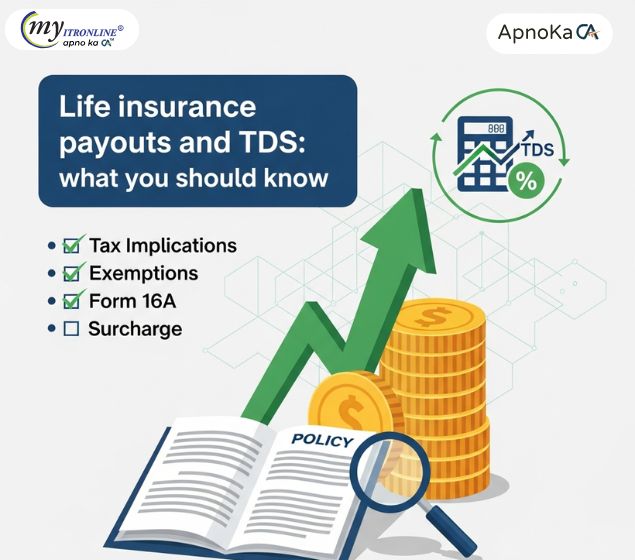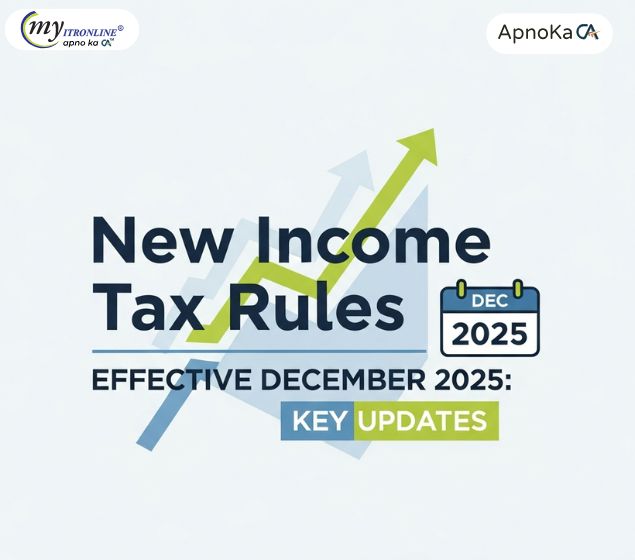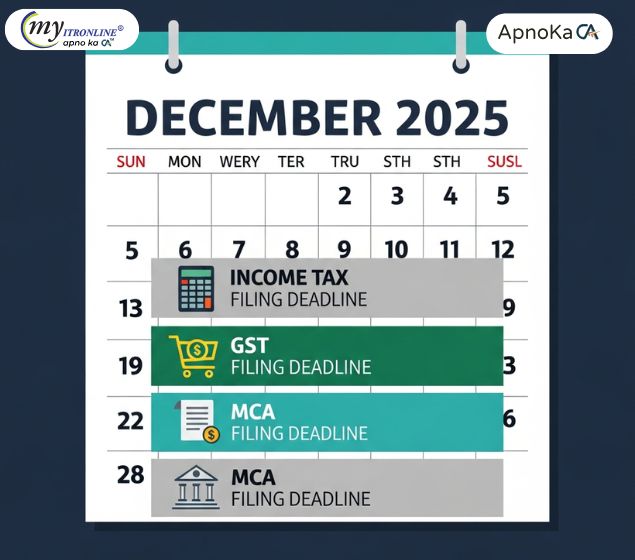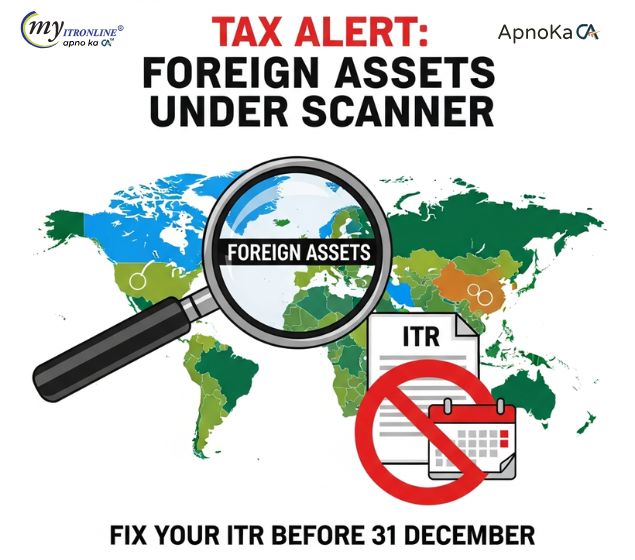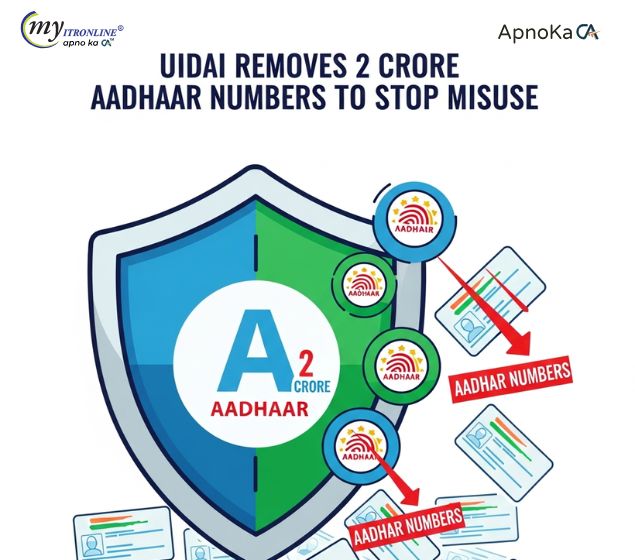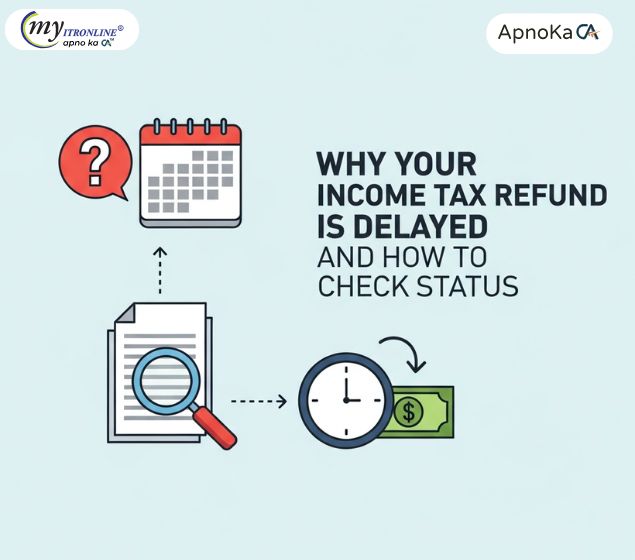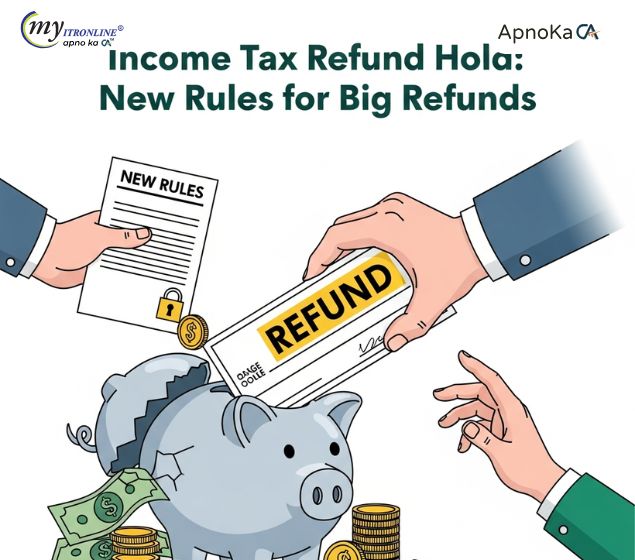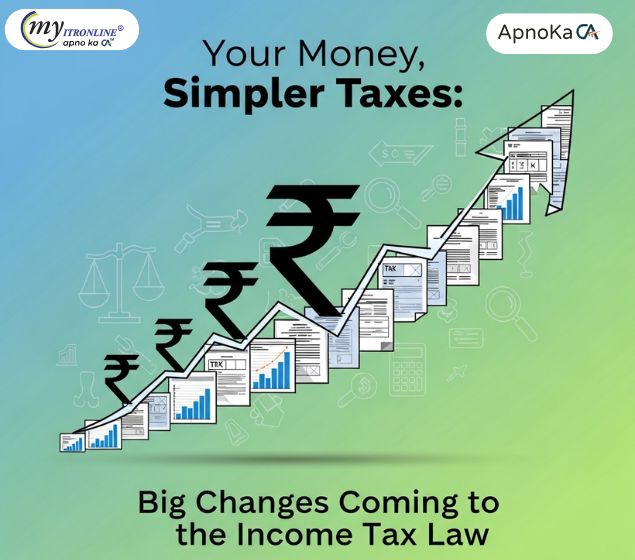What Exactly is TDS? The Core Concept Explained
TDS: Explained! From your salary slip to bank statements, understand what Tax Deducted at Source really means for your income tax in India. Learn its purpose, common types, and how to track your credits via Form 26AS. Ready to decode TDS and ensure accurate ITR filing? Myitronline is here to help you every step of the way.
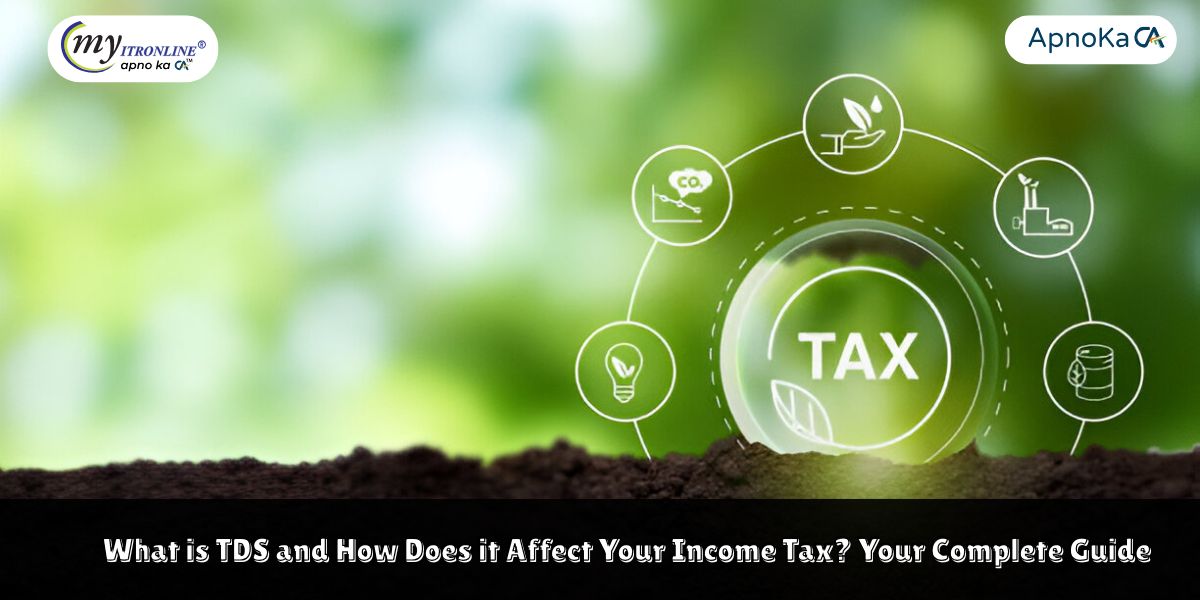
Have you seen a deduction on your salary slip or bank statement labeled "TDS"? For many people, it's a common term, but what does it mean, and how does it influence your income tax?
Understanding TDS (Tax Deducted at Source) is important for every taxpayer in India. It is not an extra tax, but a way to collect tax when income is earned. Let’s explain TDS and see how it affects your annual tax responsibilities.
What Exactly is TDS? The Core Concept Explained
TDS, or Tax Deducted at Source, is a system where income tax is deducted directly from the source of income. It is essentially an advance tax paid to the government.
Here’s how it works: When you earn income (like salary, interest, rent, or professional fees), the payer (the "Deductor") must deduct a set percentage as tax and send it to the government. You (the "Deductee") receive the remainder after this deduction.
Why does the government implement TDS?
- Early Revenue Collection: It ensures a consistent flow of tax revenue to the government throughout the year instead of waiting for individuals to pay all their taxes at the end of the year.
- Wider Tax Net: It helps capture more transactions and taxpayers, making it tougher for income to go undeclared.
- Preventing Tax Evasion: By collecting tax at the source, it lowers the chances of tax evasion.
Key Players in the TDS System:
- Deductor (Payer): The person or entity making a payment who must deduct tax at the source (for example, your employer, your bank, or a tenant paying rent).
- Deductee (Payee): The individual or entity receiving the payment, from whose income the tax is deducted (for example, you, the employee, or the landlord).
When is TDS Deducted?
TDS is usually deducted when the payment is made or when the income is credited to the payee's account, whichever happens first.
Common Types of Payments Subject to TDS
TDS applies to various types of income. Here are some common examples:
- Salary (Section 192): Your employer deducts TDS from your monthly salary based on your expected annual income and tax slab.
- Interest other than Interest on Securities (Section 194A): Banks deduct TDS on interest earned on Fixed Deposits (FDs) or Recurring Deposits (RDs) if the interest exceeds a certain amount (₹40,000 for general citizens, ₹50,000 for senior citizens in a financial year).
- Rent (Section 194-IB, 194-I): If your rent exceeds ₹50,000 per month, you might need to deduct TDS as a tenant. For rent paid by businesses or professionals, TDS applies according to Section 194-I.
- Professional Fees or Technical Services (Section 194J): TDS applies if you pay a professional (like a CA, lawyer, doctor, or consultant) or for technical services above a certain limit.
- Commission or Brokerage (Section 194H): Payments for commission or brokerage are subject to TDS if they exceed a specified threshold.
- Payment to Contractors (Section 194C): Payments for contractual work are subject to TDS.
- Sale of Immovable Property (Section 194-IA): If you purchase property worth ₹50 Lakh or more, you must deduct 1% TDS from the seller's payment.
- EPF Withdrawal (Section 192A): If you withdraw your Employees' Provident Fund (EPF) balance early (before 5 years of continuous service) and it exceeds ₹50,000, TDS is deducted.
- Winnings from Lottery/Puzzle/Card Games (Section 194B/BB): A substantial 30% TDS is deducted on winnings from lotteries, crossword puzzles, card games, horse races, etc., if the amount exceeds ₹10,000.
- Dividend Income (Section 194): Companies deduct TDS from dividends paid to shareholders if the amount exceeds ₹5,000 (unless paid to certain specified entities).
How Does TDS Affect Your Income Tax? The Crucial Link
This is where confusion often arises!
- It's a Prepayment, Not an Extra Tax: The key point is that TDS is NOT an extra tax burden. It is simply a portion of your income tax that you have paid in advance.
- Credit Against Final Tax Liability: The TDS deducted from your income counts against your total tax liability for the financial year. When you calculate your final income tax, the TDS already paid is deducted from the total tax owed.
- Possibility of a Refund: If your total tax liability for the year is less than the total TDS deducted from all your income sources, the Income Tax Department will refund the excess amount. This is why it is important to accurately claim HRA, investments, and other deductions—these can change your tax situation from owing money to getting a refund.
- If your income is below the basic exemption limit and TDS has been deducted (for example, from bank interest), you can claim a full refund of the TDS by filing your Income Tax Return.
- Mandatory ITR Filing: Even if TDS has been deducted from all your income and you think your tax liability is zero, you must file your Income Tax Return (ITR). Why?
- To claim credit for the TDS already paid. If you do not file ITR, the government won't know who the TDS belongs to, and you won't receive credit or a refund.
- To claim any potential tax refund.
- To declare all your income sources as required by law.
- To carry forward any losses (like capital losses) to future years.
- PAN Card is Vital: Your Permanent Account Number (PAN) is essential. The deductor uses your PAN to send the TDS to the government. This allows the Income Tax Department to link the deducted tax to you. If you do not provide your PAN, a higher TDS rate may be applied to your income.
Key Forms and Statements Related to TDS
To keep track of your TDS and ensure everything is correct, these documents are important:
- Form 26AS: This is your yearly tax statement available on the Income Tax e-filing portal. It summarizes all tax deducted at source from your income, tax collected at source (TCS), advance tax paid by you, and self-assessment tax paid against your PAN. Always check Form 26AS before filing your ITR.
- Form 16 (for Salary): Issued by your employer, this certificate summarizes your salary income and the TDS deducted.
- Form 16A (for Non-Salary Income): Issued by deductors (like banks for FD interest or tenants for rent) for TDS deducted on non-salary payments.
- Annual Information Statement (AIS) & Taxpayer Information Summary (TIS): These newer and more detailed statements are available on the e-filing portal. They show a complete list of financial transactions related to your PAN, including income from various sources and high-value transactions. They help you verify your income details with what the tax department has on record, including TDS.
What if TDS is Deducted Incorrectly or Not at All?
- TDS Deducted at a Higher Rate: If you suspect a higher TDS has been deducted (for instance, because you did not submit investment proofs to your employer or failed to submit Form 15G/15H to your bank), you can still claim the full credit. If this means you paid too much, you’ll receive a refund after filing your ITR.
- To Avoid TDS (Form 15G/15H): If you expect your total income for the financial year to be below the basic exemption limit (meaning you expect no tax liability), you can submit Form 15G (for general individuals) or Form 15H (for senior citizens) to your bank or other deductors. This asks them not to deduct TDS on certain incomes like interest.
- TDS Deducted but Not Reflected in Form 26AS: This is a serious issue. If TDS has been deducted from your payment but is not shown in your Form 26AS, it means the deductor has not deposited it properly with the government.
- Action: Contact the deductor right away with your TDS certificate (Form 16/16A) and proof of deduction. Ask them to file a revised TDS return and deposit the tax. While you typically have the right to credit even if the deductor defaults, it’s best to get it corrected to avoid future problems.
The Advantages of TDS for Taxpayers
While it may seem like a hassle, TDS actually helps taxpayers in several ways:
- No Lump Sum Burden: It spreads your tax payments throughout the year, preventing a large, unexpected tax bill at the end of the financial year.
- Financial Discipline: It encourages regular tax payments.
- Proof of Income & Tax Paid: Your TDS certificates and Form 26AS serve as official proof of your income and the tax you've already paid, making the ITR filing process easier.
Don't Let TDS Confuse Your Tax Journey!
TDS is a key part of India’s tax system, built for efficiency and compliance. Understanding how it works, checking your Form 26AS, and filing your Income Tax Return on time are essential steps to ensure you receive full credit for taxes already paid and claim any refunds due.
At myitronline, we simplify TDS and income tax filing. Our expert CAs will assist you:
- Reconcile your Form 26AS, AIS, and TIS with your income details.
- Ensure you claim all your TDS credits correctly.
- File your ITR smoothly, optimizing your refunds and reducing your liabilities.
- Provide clear guidance on any TDS-related questions.
Why go through these financial details alone? Let myitronline be your reliable partner for straightforward, accurate, and stress-free tax filing.
Understand Your TDS & File ITR with myitronline / Get Expert Tax Help
Prefer to talk? Call us: 9971055886 | 8130309886
FILING YOUR INCOME TAX RETURN F.Y 2024-25 (A.Y. 2025-2026) WITH MYITRONLINE
The income tax filing deadline is right around the corner. If you haven’t filed yet, do it today with Myitronline! Avoid last minute rush and file your tax return today on MYITRONLINE in Just 5 mins.(www.myitronline.com)
If you are looking for eCA assistance to file your income tax return/ GST, you can opt for MYITRONLINE eCA assisted plan starting
Upload Salary Individual Form-16
If you have any questions with filing your tax return, please reply to this mail. info@myitronline.com OR call 9971055886,8130309886.
Note-All the aforementioned information in the article is taken from authentic resources and has been published after moderation. Any change in the information other than fact must be believed as a human error. For queries mail us at marketing@myitronline.com
Krishna Gopal Varshney
An editor at apnokacaKrishna Gopal Varshney, Founder & CEO of Myitronline Global Services Private Limited at Delhi. A dedicated and tireless Expert Service Provider for the clients seeking tax filing assistance and all other essential requirements associated with Business/Professional establishment. Connect to us and let us give the Best Support to make you a Success. Visit our website for latest Business News and IT Updates.
Leave a reply
Your email address will not be published. Required fields are marked *Share this article
Krishna Gopal Varshney, Founder & CEO of Myitronline Global Services Private Limited at Delhi. A dedicated and tireless Expert Service Provider for the clients seeking tax filing assistance and all other essential requirements associated with Business/Professional establishment. Connect to us and let us give the Best Support to make you a Success. Visit our website for latest Business News and IT Updates.
View articles









